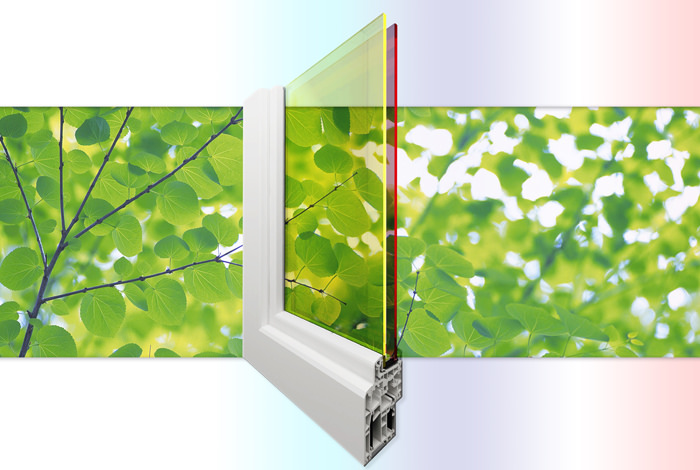Tweaking quantum dots powers-up double-pane solar windows

Solar windows generate electricity with greater efficiency and create shading and insulation too
Researchers at Los Alamos National Laboraotry are creating double-pane solar windows that generate electricity with greater efficiency and also create shading and insulation.
It's made possible by a new window architecture which uses two different layers of low-cost quantum dots tuned to absorb different parts of the solar spectrum.
The approach complements existing photovoltaic technology by adding high-efficiency sunlight collectors to existing solar panels or integrating them as semitransparent windows into a building's architecture.
To transform a window into a tandem luminescent sunlight collector, the Los Alamos team deposits a layer of highly emissive manganese-doped quantum dots onto the surface of the front glass pane and a layer of CIS quantum dots onto the surface of the back pane.
The front layer absorbs the blue and ultraviolet portions of the solar spectrum, while the rest of the spectrum is picked up by the bottom layer.
Following absorption, the dot re-emits a photon at a longer wavelength, and then the re-emitted light is guided by total internal reflection to the glass edges of the window. There, solar cells integrated into the window frame collect the light and convert it to electricity.
"Because of the the strong performance we can achieve with low-cost, solution-processable materials, these quantum-dot-based double-pane windows and even more complex luminescent solar concentrators offer a new way to bring down the cost of solar electricity," said lead researcher Victor Klimov. "The approach complements existing photovoltaic technology by adding high-efficiency sunlight collectors to existing solar panels or integrating them as semitransparent windows into a building's architecture."
The key to this advance is 'solar-spectrum splitting' which allows one to process separately higher"“ and lower"“energy solar photons. The higher-energy photons can generate a higher photovoltage, which could boost the overall power output. This approach also improves the photocurrent as the dots used in the front layer are virtually "reabsorption free."
The team has demonstrated a large-area (>230"‰cm2) tandem luminescent solar concentrator (LSC) based on the two types of quantum dots. This prototype device exhibits a high optical quantum efficiency of 6.4 percent for sunlight illumination and solar-to-electrical power conversion efficiency of 3.1 percent. The efficiency gains due to the tandem architecture over single-layer devices quickly increase with increasing LSC size and can reach more than 100 percent in structures with window sizes of more than 2,500"‰cm2.
'Tandem luminescent solar concentrators based on engineered quantum dots' by Kaifeng Wu et al, Nature Photonics, January 1, 2018.


































